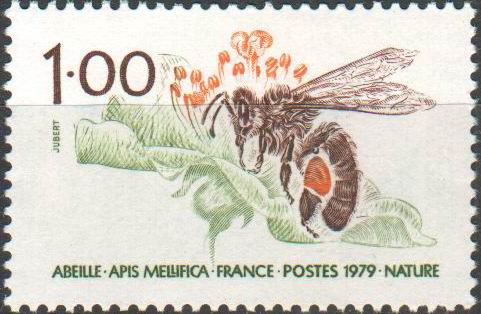Infection by Nosema ceranae, a parasite that causes Nosema disease (1), results in higher mortality among honeybees when they are exposed to low doses of insecticides. This is a recent finding by researchers at the Microorganisms: Genome and Environment Laboratory (Laboratoire Microorganismes: Génome et Environnement (LMGE, CNRS/Université Blaise Pascal Clermont-Ferrand)) and the Environmental Toxicology Laboratory (Laboratoire de Toxicologie Environnementale (LTE, INRA Avignon)).
These results are published in the journal PloS ONE.
In France, around 70 000 professional and amateur beekeepers work with honeybees (Apis mellifera). The direct influence of bees on the quality and quantity of harvests, as well as their role in maintaining floral biodiversity, is today widely recognized, and highlights the key role played by both domestic and wild bees in the functioning of ecosystems.
However, for over 15 years, bee colonies have been plagued by a strange disease that causes the disappearance of thousands of colonies every year and is poorly understood by beekeepers and scientists. To explain the phenomenon, which mainly affects beekeepers in Europe and the US, a number of factors have been suggested: biodiversity loss and reduced quality of food resources (due to climate change), increasingly intensive single-crop farming and modification of landscapes, pathogens causing diseases such as varroasis (2), foulbrood (3) and Nosema, the chemical stress resulting from the exposure of bees to veteri nary and plant protection products, and certain predators such as the Asian giant hornet. Although there is much data on the effect of nutritional, parasitic and chemical stress on the health of honeybees, it has not been possible to isolate any of these factors as being the sole cause for the decline of bee populations. Today, specialists in the field agree that research should focus on the combined effects of several of these factors.
It was in this context that research teams from CNRS, INRA and Université Blaise Pascal brought together their respective skills in parasitology and toxicology to assess the effect of pathogen/toxin interactions on bee health. In the laboratory, the researchers chronically exposed newly emerged honeybees, some healthy and others infected with Nosema ceranae, to low doses of insecticides. They found that the infected bees died when they were chronically exposed to insecticides, even at sublethal doses, unlike the healthy bees. This c ombined effect on honeybee mortality was observed with daily! exposur e to extremely low doses (over 100 times less than the LD50 (4) for each insecticide). The synergy observed does not depend on the type of insecticide since the two active ingredients studied, fipronil and thiacloprid (5), belong to different groups. However, the mechanism responsible for this synergy has not yet been identified.
This study therefore shows that interaction between Nosema disease and insecticides represents a significant additional risk for bee populations, and could possibly explain certain cases of excess mortality. This work also shows that insecticide doses considered to be non-lethal have a lethal toxic potential for organisms that are infested with parasites and therefore vulnerable. Consequently, these findings show that the management and protection of the bee population needs improving, in response to the threat posed by pollution and pathogens acting (either alone or together) on bee health. The 'Host/Parasite Interactions' team at the Micr oorganisms: Genome and Environment Laboratory (Laboratoire Microorganismes: Génome et Environnement (LMGE, CNRS/Université Blaise Pascal Clermont-Ferrand 2)) are currently seeking to find new ways of fighting this pathogen.
(1)Nosema disease is transmitted by Nosema ceranae, a microscopic fungus that colonizes the intestine of honeybees.
(2)Varroasis is a disease caused by a mite (Varroa jacobsoni) that feeds on bees' hemolymph.
(3)Foulbrood are brood diseases transmitted by bacteria.
(4)Lethal Dose 50 = a dose that causes 50% mortality in a population.
(5) These two ais belong to the phenylpyrazole and neonicotinoid insecticide groups, respectively.
Journal Reference:
Cyril Vidau, Marie Diogon, Julie Aufauvre, Régis Fontbonne, Bernard Viguès, Jean-Luc Brunet, Catherine Texier, David G. Biron, Nicolas Blot, Hicham El Alaoui, Luc P. Belzunces, Frédéric Delbac. Exposure to Sublethal Doses of Fipronil and Thiacloprid Highly Increases Mortality of Honeybees Previously Infected by Nosema ceranae. PLoS ONE, 2011; 6 (6): e21550 DOI: 10.1371/journal.pone.0021550
Source: Science Daily, 25 July 2011
http://www.sciencedaily.com/releases/2011/07/110725091434.htm

- Log in to post comments
